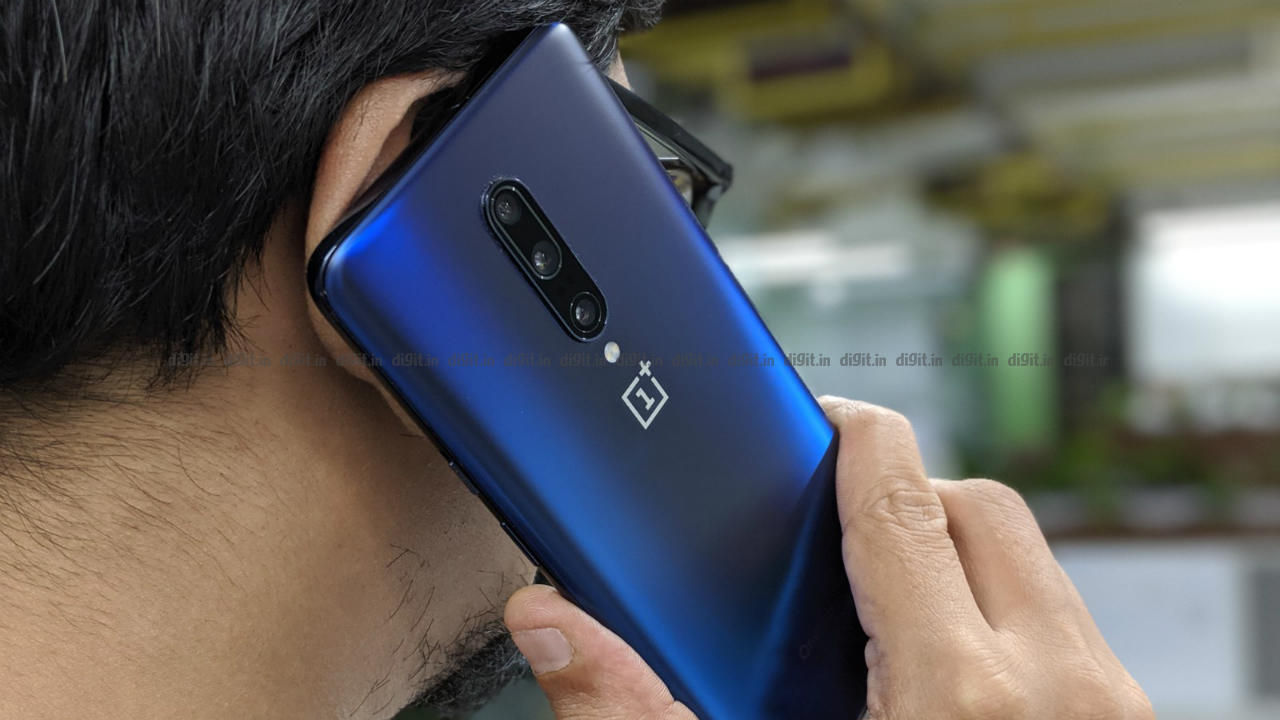
OnePlus 7 Pro 12 GB RAM detailed review
The OnePlus 7 Pro is a device that holds a rather unique position for a number of reasons. For starters, it’s the smartphone that brings OnePlus into the same league as the Samsung and Apple devices. Secondly, this is the first time after many years that OnePlus has launched two smartphones belonging to two different segments. The last time the company did something like this, it was at the time of the OnePlus 2 when they launched the cheaper, smaller OnePlus X. The latter obviously tanked, but this time around, the approach by the company is very different. The outlier device, the OnePlus 7 Pro, is incredible power and feature packed phone, addressing many of the shortcomings of its predecessors. Has OnePlus once again cracked it when it comes to premium flagships, or have they created a pricey option that wouldn’t be worth your money. Read on to find out.
Build and Design
The OnePlus 7 Pro is a chunky smartphone for sure. It has a very similar build to the previous OnePlus 6T. What is noticeable about the phone though is that it is definitely thicker than the OnePlus 6T, measuring in at 8.8mm, a whole 0.6mm thicker than the previous phone. It is also considerably heavier, weighing 206 grams against the 185 grams of the OnePlus 6T. Basically, this IS a bigger phone.
The review unit we received was the Nebula Blue variant, which has a very similar finish to the Silk White OnePlus 6. The back has a frosted finish with a nice blue colour treated to change shades depending on how light hits it. The finish is smooth to the touch and while it just barely holds fingerprints, the back is somewhat slippery and does warrant the use of the clear TPU case that’s included in the box.
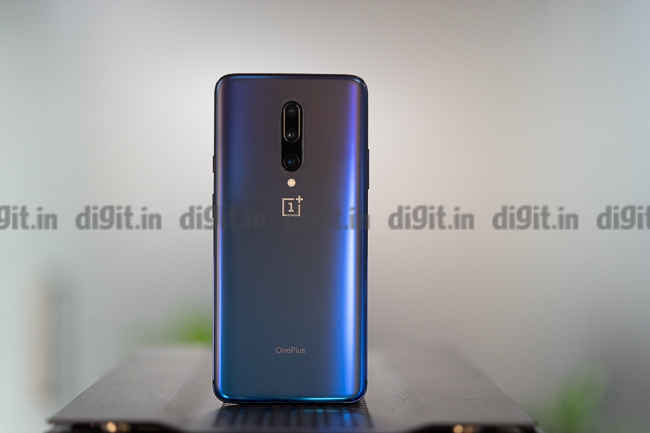
There’s still no IP rating on the phone, but there is enough evidence out there that the OnePlus 7 Pro is designed to be somewhat water right. This is despite the pop-up front-facing camera that’s housed on the top left corner. The volume rocker is placed on the left side of the frame and are easy to press with adequate feedback. The power button is on the right side, along with the signature OnePlus Alert Slider. The slider has a deep textured finish that is really nice to the touch and helps distinguish between the power button and the slider.
Overall, the build quality of the OnePlus 7 Pro is seriously good. It has solid construction with the back glass, the metal frame and the display blending in incredibly seamlessly. The only sharp edge on the phone is on the vertical camera module that houses the triple lens setup. The Nebula Blue finish is pretty gorgeous to look at and you’re going to really want to use the phone without the TPU case and we won’t blame you for it. Just do remember that the phone is slippery and could take a tumble off a table while vibrating.
Display
One of the most notable upgrades to the OnePlus smartphone that helps it be considered as a premium smartphone is the display. Up until now, OnePlus has stuck to a 1080p display, but the OnePlus 7 Pro goes the extra mile. Here, the display has a resolution of 1440 x 3120, giving the display an overall pixel density of roughly 516ppi. The notable bump in resolution isn’t the only thing working in favour of the OnePlus 7 Pro. Besides the high-resolution display, there’s also the HDR10+ certification which will allow you to stream HDR content from supported services like Netflix. Another notable feather in the OnePlus 7 Pro’s display is the 90Hz refresh rate, a feature that’s only found on very few Android smartphones outside of the “gaming smartphone” niche. We’ll start with this last feature first.
We tested the display with a number of popular games that have been optimized for high refresh rate displays and discovered that none of them supports the 90Hz refresh. We learned that this is because OnePlus would have to specifically enable the feature for games as and when they are tested. We noted in a separate piece of this shortcoming, but also notice how incredibly smooth the entire UI is when the display is set to its 90Hz refresh rate. Back when the original OnePlus One was released, it caused ripples in the industry for bringing high-end features to a phone that was priced significantly lower than the rest. Once again, the OnePlus 7 Pro does just that, bringing a high refresh rate to a price segment that has never seen the feature before. Once games get enabled for the feature, we expect the phone to be even more lucrative that it is right now.
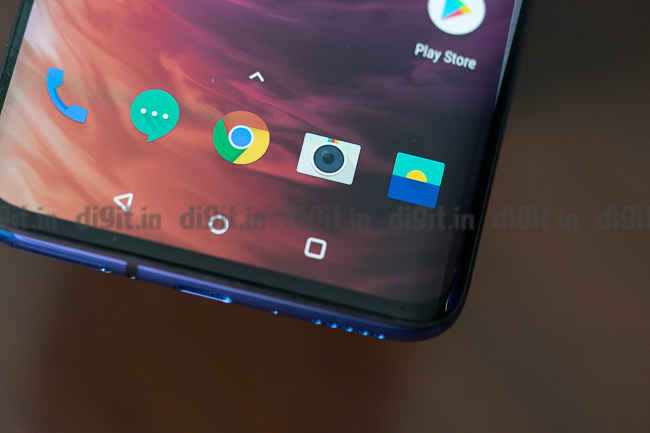
OnePlus 7 Pro features a QHHD HDR10+ certified display with a 90Hz refresh rate
Moving onto the HDR display, the max brightness on this panel as per our lux meter is 742 lux, which puts it in the fairly high range. The lowest it will go is 7 lux, which isn’t the lowest we’ve recorded, but is definitely dim enough to let you use the phone in pitch darkess without any strain on your eyes. The phone offers two basic colour profiles; Vivid and Natural. Between the two, those who prefer vibrant colors and even those who are okay sacrificing saturation for colour accuracy would both be satisfied. IF you’re the rare breed who is absolutely anal about their colour reproduction, the Advanced mode offers AMOLED HDR, sRGB and DCI-P3 to choose from. You can even tweak the white balance of the display to your liking, but we recommend not tinkering with it unless you have the right tools to help you calibrate the display.
Using the phone outdoors, its peak brightness of 742 lux proves to be more than adequate. We also noticed that the colours on the display don’t wash out when the display’s brightness is set to max. The pre-applied screen protector does add to the reflectance of the smartphone overall and we discovered that removing it improves things. You may not want to do this in order to keep the display scratch free, but the OnePlus 7 Pro’s display truly shines when it has the screen protector removed.

A completely notch free, edge-to-edge display
To sum things up, OnePlus has really hit it out of the park with the display on the OnePlus 7 Pro. For all its features, there are enough customizing options, including the ability to turn down the resolution to FHD+ and lock the frame rate to 60fps in order to maximize battery life. This is definitely one of the strong suites of the phone.
Performance
On to the juicy stuff. Our review unit of the OnePlus 7 Pro comes with 12GBGB of RAM, an amount that we have a hard time justifying for a phone. Still, its definitely a lot of glitter, and some gold. The Phone runs on Qualcomm’s latest Snapdragon 855 chipset and with 12GB of RAM, it has more than enough room to flex its muscle. There’s even UFS 3.0 storage to ensure there’s nothing bottle-necking the performance package here, and it all looks very impressive on paper, but let’s see how it faired across our suite of tests.
Looking that the numbers for each of the big-wig smartphones, we are surprised to find that Samsung’s Exynos powered S10 series of smartphones all outpace the OnePlus 7 Pro’s CPU benchmark numbers.
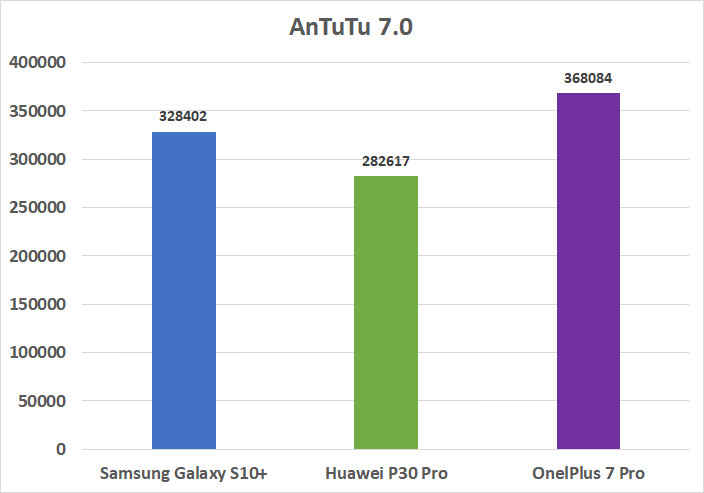


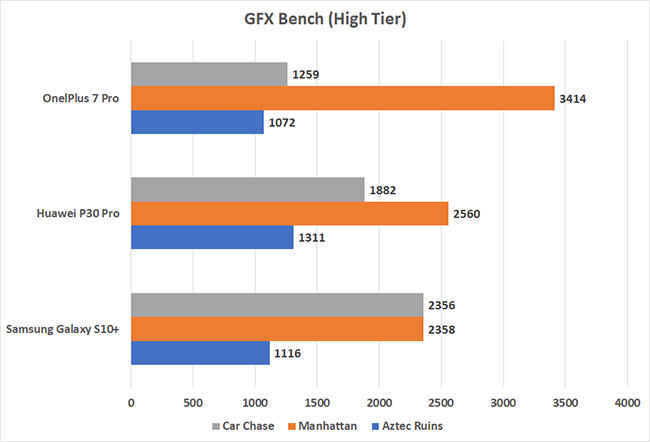
Gaming on the OnePlus 7 Pro, expectedly, is an absolute treat. The gameplay is butter smooth, but we noted some significant heat build up around the camera module, which can be felt on the back, the display and even the frame of the phone. We had a hard time continuing to play on the OnePlus 7 Pro after 30 minutes. We make note of the OnePlus 7 Pro’s gaming performance in the phone’s comparison with the Black Shark 2.
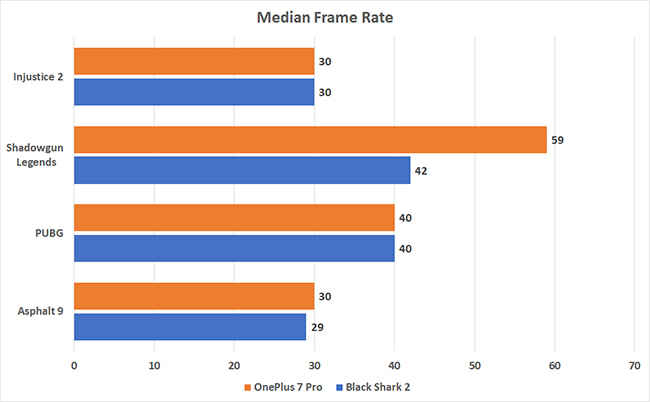
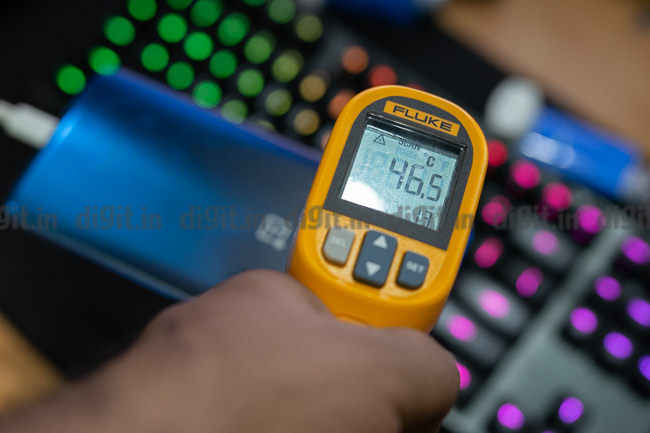
For the day to day user, the OnePlus 7 Pro is one of those smartphones that you can expect will last you at least two to three years. In terms of performance, good luck finding faults with the OnePlus 7 Pro.
Camera
The camera on the OnePlus 7 Pro has received a significant bump from the OnePlus 6T. It now comes with triple camera setup, featuring the Sony IMX 586 sensor for the primary camera, a 3x telephoto lens mounted on a 13-megapixel sensor and a 16-megapixel ultra-wide camera. At first glance, it is a pretty standard configuration, but dig deeper and its flaws start to show up. You can read about the issue with RAW mode in our separate piece here.
Disclaimer: All images below have been resized for web. You can see the original straight out of camera JPGs in our Flickr Gallery.
The primary camera works well, producing incredibly sharp, consistent images in the 12-megapixel mode. This is due to the fact that the 12-megapixel image is a result of binning the 48 million pixels on the sensor. What you get is a sharp, colourful image. We had the chance to shoot with the OnePlus 7 Pro in a myriad of conditions and found it to handle most shooting conditions well.
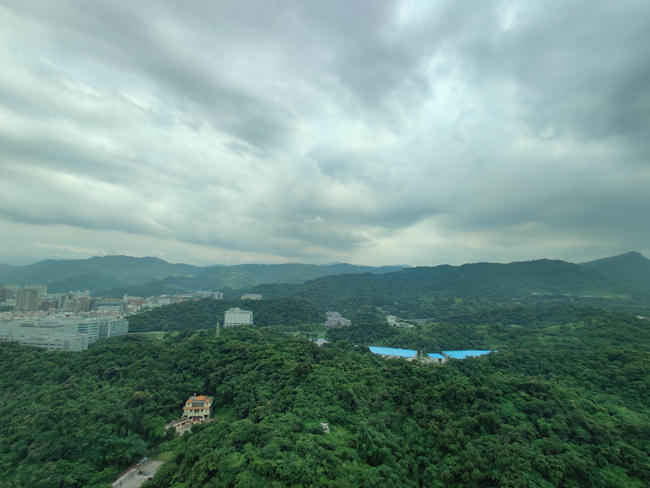


If you ever find yourself in parts of the world which have clear blue skies, you’re going to love shooting with this phone. The binned result has an impressive dynamic range, which is in part also due to the HDR algorithm which OnePlus has developed in-house. The low light photos from the OnePlus 7 Pro are also usable with some clever editing.
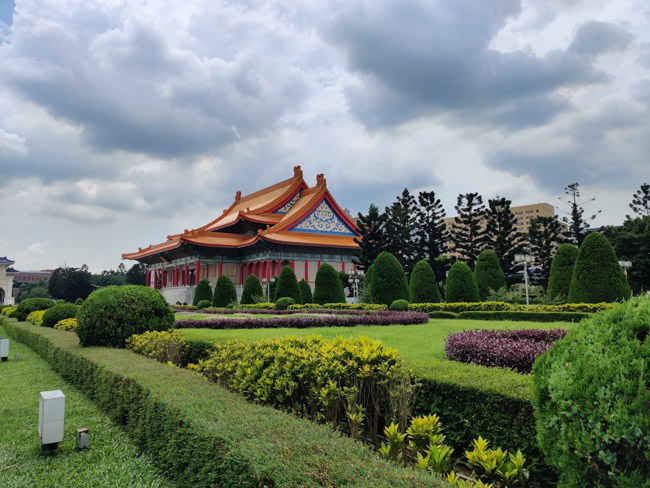
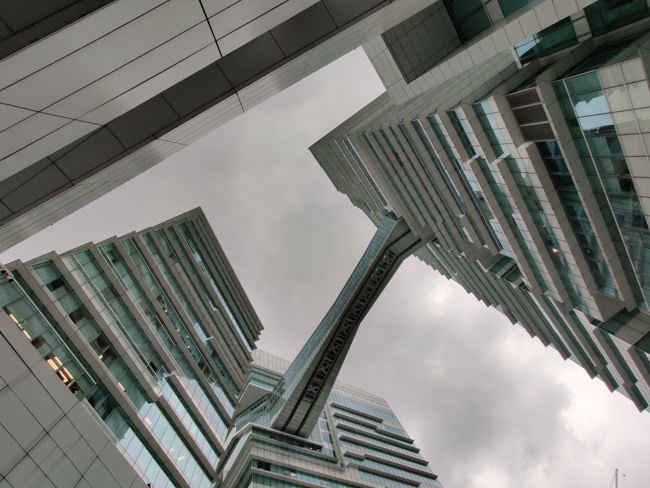
Ultra-wide angle corrects distortion in the final image
The ultra-wide lens shoots impressively wide shots and applies distortion correction to them as well. The edges do appear to be slightly less sharp than the center and we’re sure that if distortion correction is disabled, you will see the softening in the corners. What is nice about the ultra-wide camera is that it has its own focussing module, allowing you to get creative with framing and focussing.
The telephoto lens has been dogged by controversy, with OnePlus using a portion of the 13-megapixel sensor to achieve the advertised 3x field of view. We even noted that the final image’s EXIF data doesn’t match the 3x field of view, but OnePlus Imaging Head, Simon Liu says that could be due to an error in the EXIF data programmed into the camera. OnePlus uses a 13-megapixel sensor on the telephoto lens, but outputs an 8MP image as it needs to user a portion of the sensor for the additional reach. The results are visually okay, but we’re not too happy about OnePlus using technological loopholes. However, the resulting images are again very much usable in the daytime, but low light results leave a lot to be desired.

Low light photo from the OnePlus 7 Pro
Overall, the OnePlus 7 Pro’s camera stack is definitely impressive, but does not entirely measure up to the performance of the likes of the Samsung Galaxy S10. With a lack of access to any lens in the Pro mode and RAW capture only producing 12MP images, there is a LOT of room for improvement here. The only question is, will OnePlus actually get to it?
Selfie Camera
The OnePlus 7 Pro houses a 16-megapixel pop-up selfie camera with an aperture of f/2.0. The mechanism is fast enough to not feel annoying. What is, however, of concern to us is how long would the lens remain scratch-less given that dirt and dust particles could easily get caught in the camera assembly. Over the last month of using the phone, we’ve seen a few scratches, but nothing that would hamper the performance.
The 25mm field of view offered by the camera is sufficiently wide and sits at a point where the distortion is well controlled. Any wider and the distortion around the edges would start becoming increasingly apparent.


What you will like (as we did) were the sharp, colourful images that the camera produces. What we didn’t like was the lack of detail, due to the strong JPG compression algorithm used by the company.
Battery Life
The OnePlus 7 Pro comes packing a 4000mAh battery and great battery life is something that OnePlus smartphones have been known for. Interestingly, with a significant bump in the display, the battery life has seen some drastic changes.
When the display was set to its full WHD resolution and 90Hz refresh rate, the phone barely lasted a whole day of heavy use. This included about 2 hours of talk time, about an hour’s worth of gaming (Call of Duty Mobile, PUBG Mobile) and the usual excessive WhatsApp use. We found that under these conditions, the phone would just barely last till the end of the day, sometimes requiring a top up in case the camera was used more than it should be.
Turning the resolution down to FHD+ and the frame rate being locked to 60Hz, the battery life improved, but not by a whole lot. We managed to get a full day’s worth of heavy use out of the phone. This included using it excessively to shoot photos and videos during our trip to Taiwan, and even uploading the content onto our Google Drive.

On the more objective side, the OnePlus 7 Pro lasted 9 hours and 24 minutes on the Geekbench battery test. Using our standard 1080p video file for the video loop test had the phone last a slightly longer 610 minutes.
While the battery life isn’t bad by any means, we’ve just come to expect better from OnePlus. However, given that the company really upped the ante with the display, a drop in battery life is to be expected. However, thanks to Warp Charge, you don’t have to worry too much about a dead battery at awkward moments.
Bottomline
The OnePlus 7 Pro is in every way a premium flagship smartphone. Not only do you get flagship specifications, but you finally also get a WHD display with HDR10+ certification. While there’s no official IP rating, the phone does come with extensive rubber seals, giving you some peace of mind during light rains. The OnePlus 7 Pro leaves very little reason to be unhappy but does reveal a few areas where there is scope for improvement, like the camera app, which could be more wholesome. The two reasons why the OnePlus 7 Pro loses out on points in our review is the lack of an IP rating, which we consider important to have and the fact that the phone has become thicker and heavier than its predecessor. In fact, of all the premium Android flagships in the market right now, it is the heaviest and thickest. The battery life was also on the lower side, but that is to be expected given the significantly upgraded display. All in all, for the price, the OnePlus 7 Pro remains a rather strong contender in the premium flagship segment and you wouldn’t regret buying this phone.
[ad_2]
Source link






